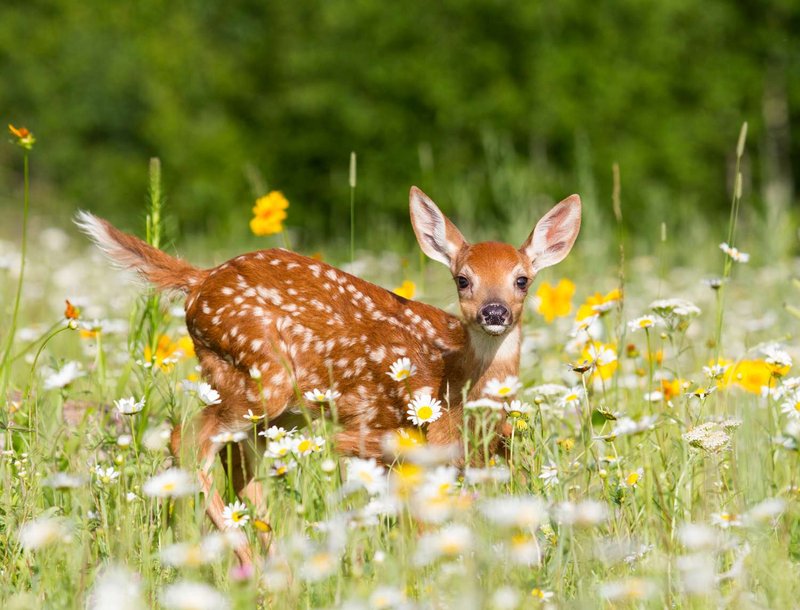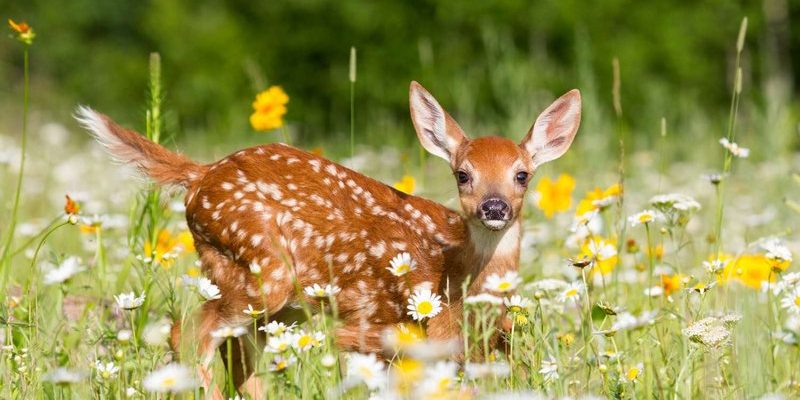
Let’s take a closer look at how these gentle creatures care for their young. Picture a serene forest setting. The leaves rustle softly as a doe leads her spotted fawn to a secluded area, away from predators and human disturbances. Here’s where the magic happens, as these animals demonstrate a remarkable balance of protection, nurturing, and learning.
Finding the Perfect Birthing Spot
When it’s time for a doe to give birth, she seeks out the perfect spot. This isn’t just any random place; it’s a carefully chosen location. She looks for dense cover—think tall grass or thick bushes—where she can hide her fawn from predators. This choice is critical because, in the wild, safety is everything. The first few days of a fawn’s life are the most vulnerable, and a hidden spot gives it a fighting chance.
The birthing process typically happens in late spring to early summer, coinciding with the peak of food availability. This timing ensures that the doe has enough resources to nourish herself and her newborn. After a gestation period of about 200 days, the doe will find her spot and give birth to usually one, but sometimes two fawns.
Instincts and Initial Care
Once the fawn is born, the doe’s instincts kick in. Instantly, she licks her fawn clean, which helps to stimulate its breathing and circulation. You might wonder why she’s doing this. Well, this act not only keeps the fawn warm but also helps bond the two. It’s like a mother’s first hug after her baby enters the world.
Within hours, the fawn is on its feet, trying to take its first wobbly steps. The doe is right there, guiding and encouraging it. If you’ve ever watched a baby learn to walk, you know how important that support is. The same goes for these young deer. As they navigate their new surroundings, the mother calls to her fawn, using gentle bleats to communicate and reassure.
Hiding and Staying Safe
One of the most crucial aspects of raising fawns is teaching them how to stay safe. The doe teaches her fawn the art of hiding. For the first few weeks, fawns are kept hidden in tall grass or brush while their mother forages nearby. The fawns lie still, with their spotted coats providing excellent camouflage against the forest floor—almost like nature’s very own stealth armor.
This strategy is effective. While the mother is off feeding, she can keep an eye on her young from a distance. If a threat appears, she can quickly return to her fawn and lead it away to safety. During this time, the fawn learns to be quiet and still, an essential skill for survival.
Feeding and Nutrition
Once the fawn is strong enough to accompany its mother, feeding becomes an important daily ritual. The doe will nurse her fawn for several months, providing crucial nutrients. If you think about it, this is much like how we ensure our kids eat a balanced diet. The mother will also teach her fawn which plants and foliage are safe to eat.
As the fawn grows, it begins to nibble on solid food. The doe may take the fawn to areas with plenty of delicious greenery, showing it what to eat. It’s a bit like taking your child to the grocery store and pointing out their favorite snacks. This learning phase is vital, as the fawn needs to build up its strength and health to thrive in the wild.
Social Learning and Fawn Play
As fawns grow, they also engage in play, which is an essential part of their development. You might have seen videos of young deer frolicking and jumping around—this playful behavior isn’t just for fun. It helps them build coordination and strength, skills they’ll need to evade predators later on.
Here, the doe plays an important role. While she keeps an eye on her fawn, she also allows it to interact with other young deer. These social interactions are crucial for learning how to socialize with peers and understand their place in the herd. Just like kids learn from playing with others, the fawn absorbs valuable lessons about communication and social cues.
Protection from Predators
In the wild, predators are always lurking, so the doe’s primary responsibility is to protect her fawn. She uses her keen senses—especially her hearing and smell—to detect any danger. If she senses a threat, she can react quickly, often leading her fawn away to safety.
What’s fascinating is how the doe teaches her fawn to be vigilant. She will often stomp her hooves or snort to warn her fawn of danger, instilling in it the importance of being alert. It’s as though she’s passing down a code of survival that has been honed over generations.
Independence and Transition
Around six to eight months, fawns start to become more independent. They’ve learned the ropes and can navigate their environment better. The doe gradually encourages this independence, allowing her fawn to roam further from her side while still keeping an eye on it. This transition is crucial, as it prepares the young deer for life on its own.
By the time spring rolls around again, the fawn is usually ready to stand on its own. It’s an exciting time, watching a new generation grow up, just like any proud parent would. The doe, having done her job well, will often mate again, starting the cycle all over.
In summary, raising young white-tailed deer is a multifaceted process filled with care, instinct, and learning. The bond between a doe and her fawn is strong and vital for survival, making it one of nature’s remarkable stories. By understanding how these animals nurture their young, we gain insight into the delicate balance of life in the wild, one that’s worth respecting and preserving.

